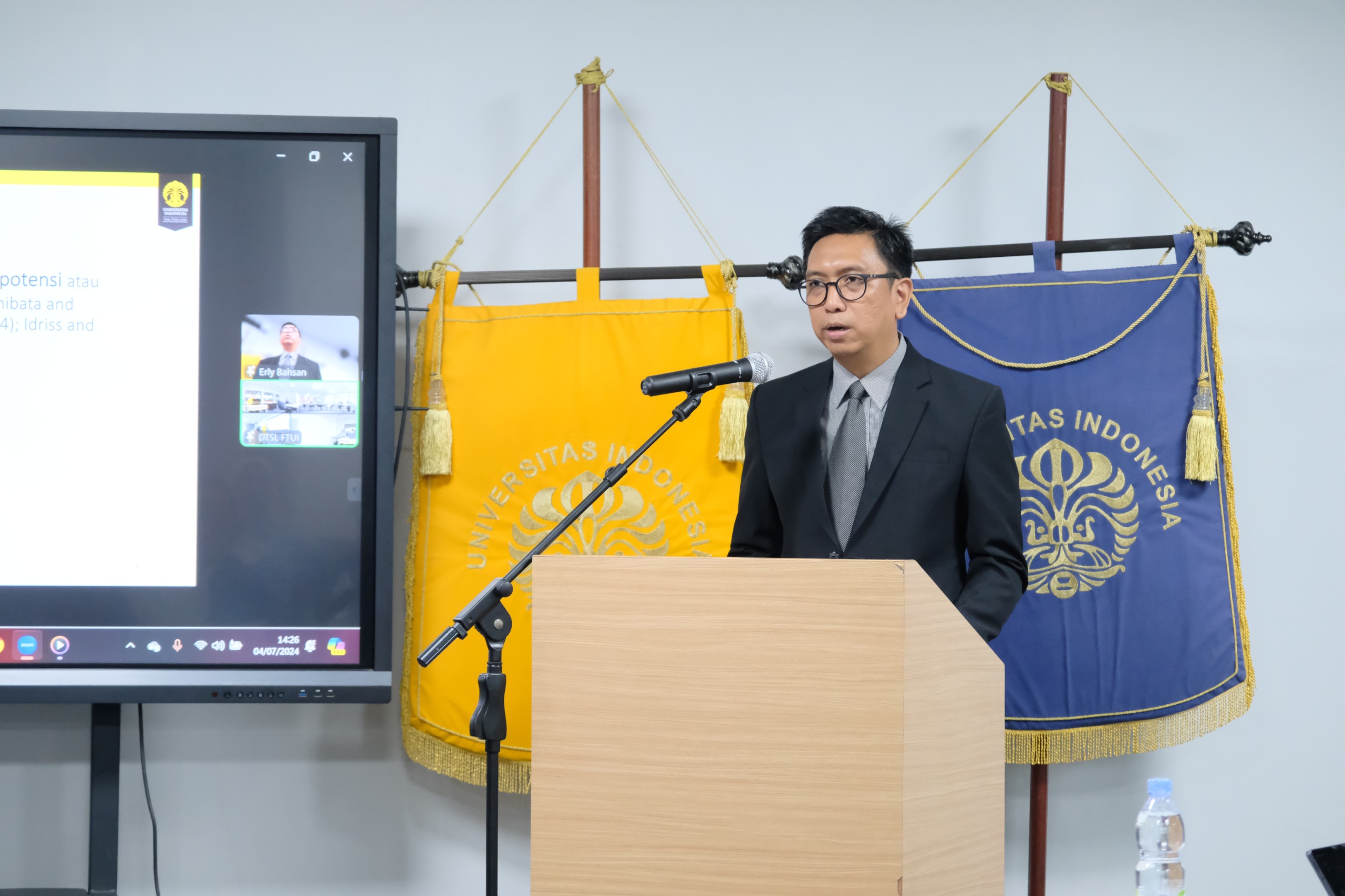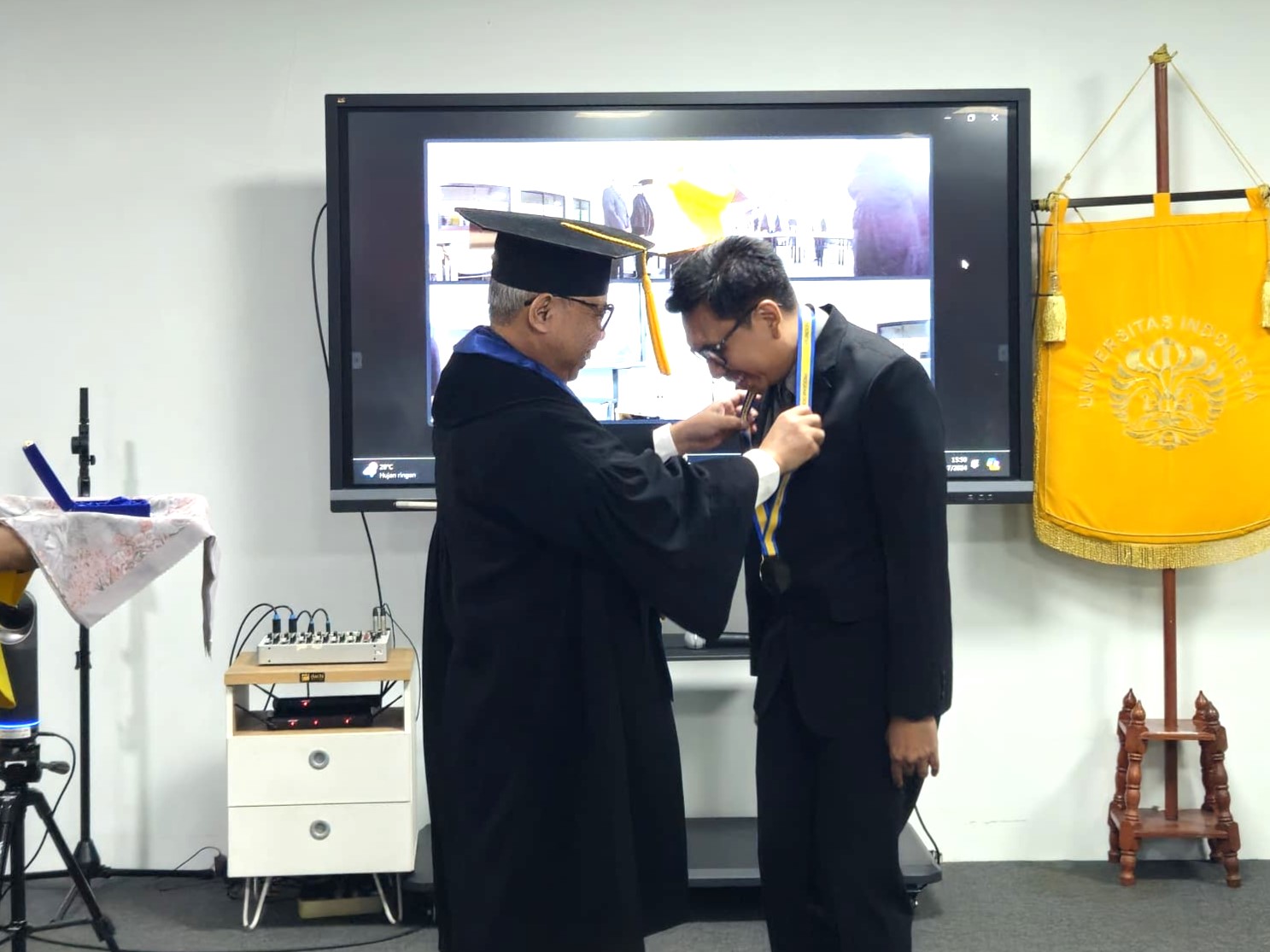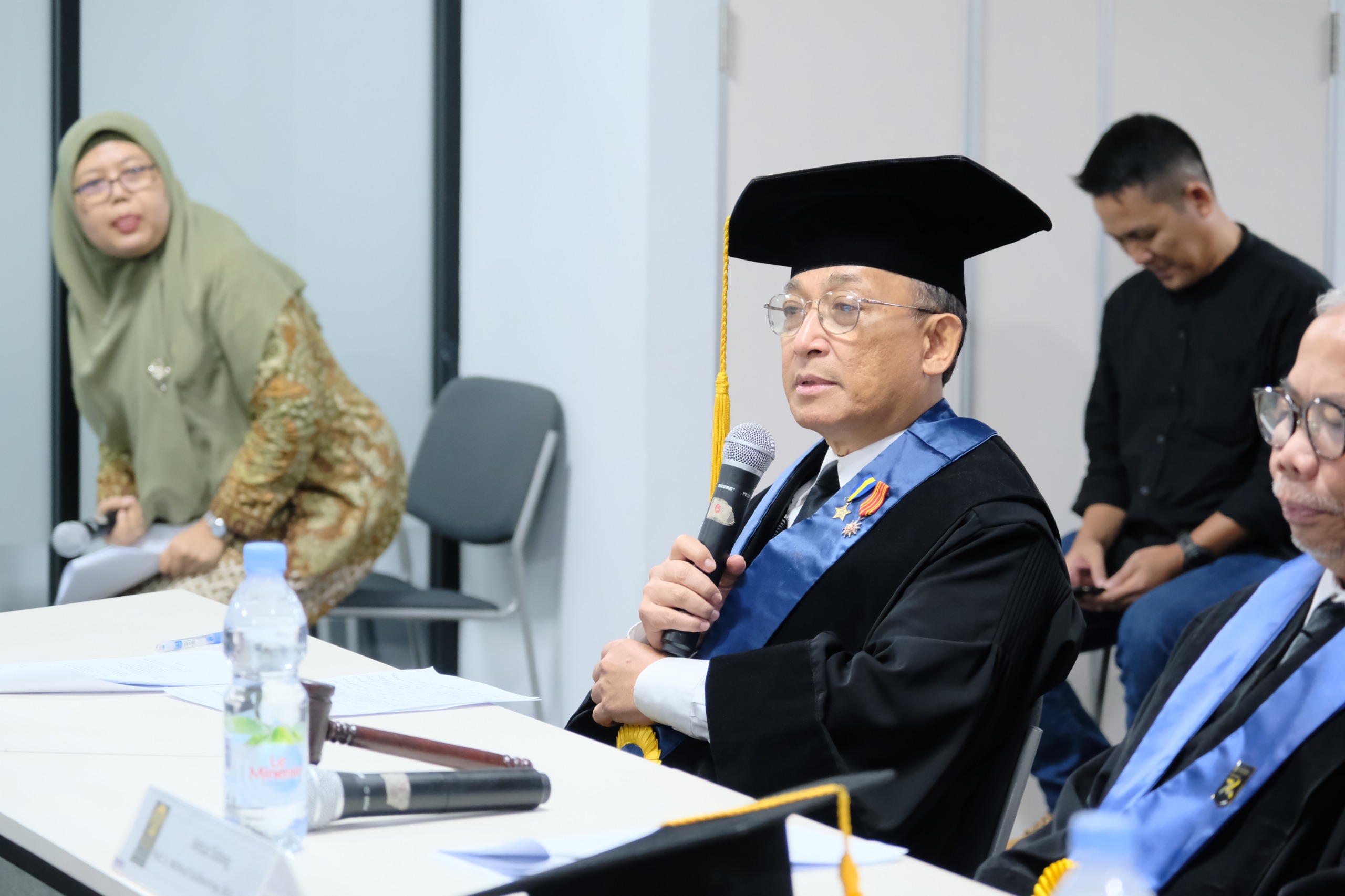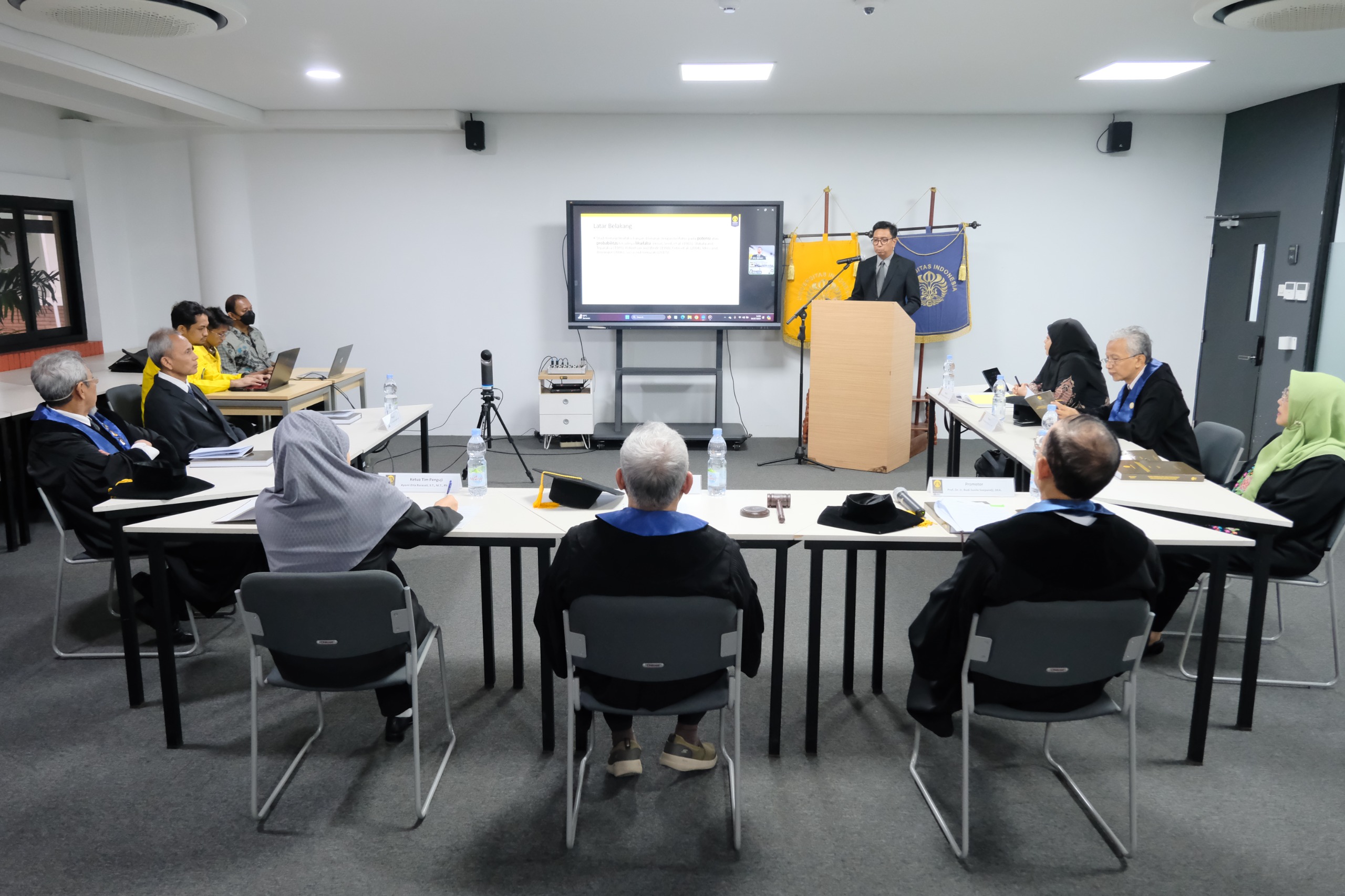One of the most frequent disasters in Indonesia is earthquakes, making Indonesia the second most earthquake-prone country after China, according to Statista. This is due to Indonesia’s geographical location in the Pacific Ring of Fire, where three tectonic plates meet: the Indo-Australian Plate, the Eurasian Plate, and the Pacific Plate. Addressing this phenomenon, Erly Bahsan, a doctoral candidate in the Department of Civil Engineering (DTS) at the Faculty of Engineering, Universitas Indonesia (FTUI), explored liquefaction issues in her dissertation titled “Modeling Lateral Deformation After Liquefaction Using Smoothed Particle Hydrodynamics Method on Case Study of the 2018 Central Sulawesi Earthquake.”
“The major earthquake that struck Central Sulawesi in 2018 caused dangerous events for constructions, namely large lateral ground movements that occurred after liquefaction. This was observed in several locations around Palu City, including Balaroa, Petobo, Jono Oge, Lolu, and Sibalaya. The impact of damage caused by these ground movements underscores the need for further research on soil behaviour after liquefaction. Geotechnical studies have mostly focused on the potential occurrence of liquefaction, while what happens after liquefaction is rarely studied because the condition is deemed to have already failed,” explained Erly.
Liquefaction is a phenomenon where soil loses its strength, often due to increased pore water pressure and the densification of sand layers under cyclic loading during earthquakes. In her research, Erly Bahsan employed the Smoothed Particle Hydrodynamics (SPH) method to model soil movement behaviour during liquefaction. This method is based on mesh-free or grid-less concepts, using particles programmed to behave according to the modelled material.
The primary goal of this research was to establish modelling procedures and appropriate parameter assumptions within SPH to capture soil behaviour, including lateral movement and other effects post-liquefaction. Initial simulations conducted by Erly did not use soil constitutive models, thus only modelling saturated soil behaviour but not accurately capturing the soil movement patterns. At this stage, Erly processed field data and laboratory data from soil samples taken at Lolu Village.
In the second model, Erly used the Drucker-Prager criterion to represent the soil material failure behaviour using the Fortran language platform, but the results still did not accurately show the expected soil failure movement. Subsequently, Erly attempted to use the PersianSPH platform available in C++, chosen because it accommodates the Drucker-Prager constitutive model to represent the elastoplastic conditions of the material. Simulation results with PersianSPH indicated lateral shifts occurring in models with cohesive layers above non-cohesive layers, with a thin water layer between them.
“The significant lateral movement observed in the field during these simulations still does not fully approximate real conditions due to the simplified models used. However, the simulations revealed lateral shifts in soil layers above thin water layers by 7-10 cm in a two-dimensional model with a length of 26.75 m and a surface slope of 10%. Such shifts did not occur in models with the same slope but without a thin water layer. Therefore, it can be concluded that thin water layers and surface slope are two influential factors in lateral movements,” said Erly.
Furthermore, she mentioned that the research faced several challenges, one being the lengthy computation time proportional to the complexity of the built model. The more complex the model used, the longer the computation time required, ultimately affecting the match with actual field conditions.
FTUI Dean, Prof. Dr. Heri Hermansyah, ST., M.Eng., IPU., responded to this research, stating, “Erly’s research contributes significantly to understanding soil behaviour after liquefaction, especially in the context of disaster risk mitigation in Indonesia. The results of this research are expected to be used as a valuable reference for both practitioners and academics in modelling and anticipating soil movements post-liquefaction, thereby minimizing the damage caused by earthquakes in the future.”
Erly’s research on modelling lateral deformation after liquefaction has earned her a doctorate with a GPA of 4.0 and a “Very Satisfactory” predicate on Thursday, July 4, 2024. Erly is the 72nd doctoral graduate from the Department of Civil Engineering and the 559th doctoral graduate from FTUI. Her doctoral defence was chaired by the Session Chair, Prof. Ir. Mahmud Sudibandriyo, M.Sc., Ph.D.; with the Supervisor, Prof. Dr. Ir. Budi Susilo Soepandji, DEA; and Co-Supervisor, Dr. Ir. Wiwik Rahayu, DEA. The examination committee included Ayomi Dita Rarasati, S.T., M.T., Ph.D.; Prof. Ir. Widjojo Adi Prakoso, M.Sc., Ph.D.; Dr. Raden Rara Dwinanti Rika Marthanty, S.T., M.T.; Prof. Dr. Ir. Tommy Ilyas, M.Eng; and Dr. Ir. Budianto Ontowirjo, M.Sc.
***
Public Communication Office
Faculty of Engineering, Universitas Indonesia







